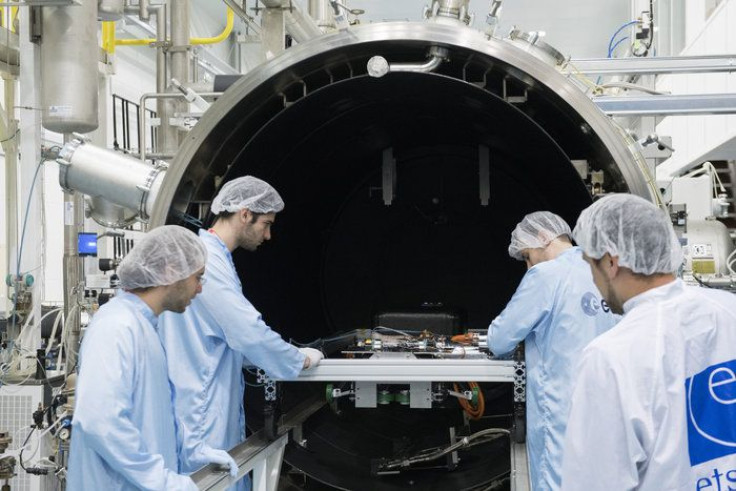SpaceX’s Hyperloop Competition Finalist Tests Pod Motor In ESA’s Space Simulator

Elon Musk’s SpaceX is hosting the third installment of the Hyperloop Pod Competition, inviting student teams from different parts of the world to showcase their functional pod prototypes for the rapid transit system.
As the challenge, set to take place July 22, will be focusing on the speed aspect of the self-propelled vehicles, one of the 20 finalists tasked to design and built the transport vehicle turned to the European Space Agency (ESA) to test their technology.
The Delft Hyperloop team from the Delft University of Technology, Netherlands, tested the motor module of its pod at the agency’s European Space Research and Technology Centre in the country. Though the facility is normally used for satellite testing, the students employed its capabilities to see how the components set to be integrated with their pod performed in an airless state.

They operated the electric motor, battery, sensors, and brakes in the agency’s 3.5m-long and 2m-wide VTC-1.5 Space Simulator chamber.
“TU Delft has a long tradition of entering such engineering challenges,” team member Rico Hageman said in an ESA statement. “We’d already subjected individual elements to vacuum testing but the large size of this chamber lets us run everything at once.”
The entire test rig was tested in the chamber for about half an hour at a time. The group had a particular focus on a number of challenges that occur while running a high-power vehicle system like this in near-vacuum environments.
This included checking temperature levels of the motor controllers as they performed and monitoring the working of the carbon fiber pressure housing around lithium polymer batteries of the pod. These batteries, as the ESA release said, have high-density but were not qualified to work at low pressures.
In addition, there were some “concerns about the possibility of electrical arcing at low pressure from our high voltage differential,” Hageman added in the statement.
The Delft Hyperloop team started working on their design in November last year.
“Everything started from a blank sheet of paper, so it’s been an exciting – and busy – time for us all,” chief engineer Vlad Petrescu, added. “We made a lot of tests of components and systems, and have iterated time and time again.”
They plan to test the updated version of their system in a few weeks.
The concept of Hyperloop was coined by Elon Musk in 2012 and has since been in development as an open-source project across the globe. Several companies like Virgin Hyperloop One were also indulged in the development of the high-speed transport system, which involves sealed near-vacuum tubes. Theoretically, if nearly all of the air present in the tubes is removed, the vehicles or pods should be able to travel without air resistance at speeds of 1,000 kmph or more.
Just like last year, SpaceX's upcoming competition — aimed at the development of functional prototypes and encouraging student innovation — will also be conducted in the 1.2-km long low-pressure tunnel built next to the company's headquarters in Hawthorne, California.
© Copyright IBTimes 2024. All rights reserved.











